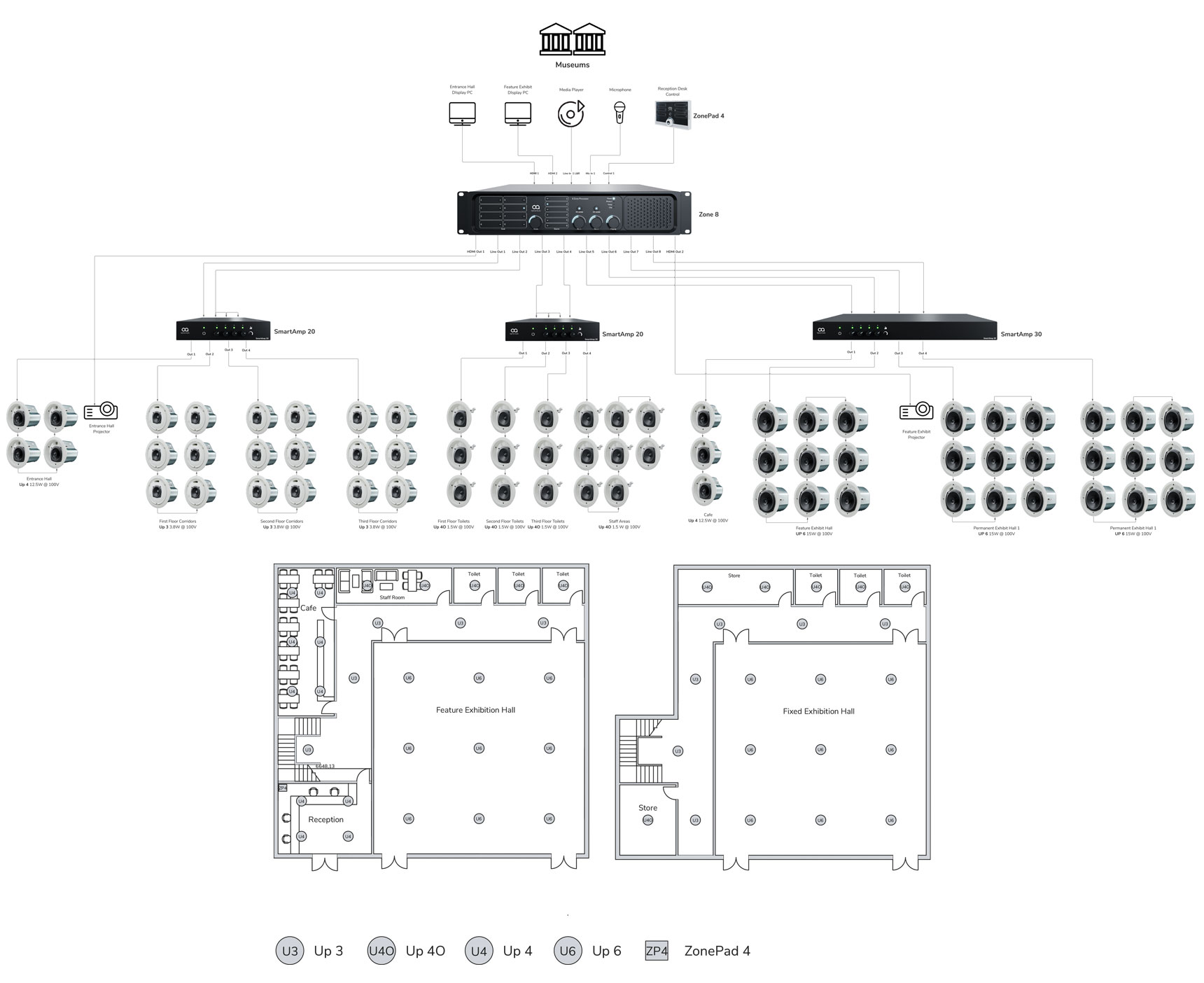Museum
Commercial Audio System
Sonic Artistry

Enhancing the Museum Experience
Elevating Appreciation
Enriching Interpretation
Interactive Experiences

Engaging the Senses
Setting the Mood
Crafting Atmosphere

Hitting the Right Note
Optimal Audio Loudspeakers
Easy Set Up
Optimal Audio Zonal Controllers
Our award winning Zone controllers provides the foundation to deliver efficient, high-quality multi-zoned sound systems. When combined with WebApp you unlock the full potential of our loudspeakers via onboard EQs, speaker presets, structured time of day routines and so much more.
This is critical, not to just ensure the sound performance is at its optimum, but to also provide full flexibility for a multi-zone museum for when maybe music starts and finishes in a given zone and the sound level in those respective areas.
Easy To Use
Staff Focused on Visitors
It’s critical that staff are focussed on the needs of the visitor and preserving the exhibition space, not being distracted by having to manage a complex sound system.
That’s the beauty of Optimal Audio as following installation, staff can then be presented with a simple user interface which allows them to easily operate the system from any device, or if a dedicated user control solution is preferred, ZonePad is an elegant wall-mounted control panel that is easy to use.
Sound Systems For Museums
A museum sound system has to provide clear intelligible sound for passing information to visitors. With many different areas flexible zoning is a must.
This example shows the flexibility and capabilities of the Zone 8, with all 8 zones in use with control from the reception desk for the main areas on a ZonePad 4.
The feature exhibit hall has a large screen video projector fed from a PC via the Zone 8, for those occasions when audio needs to be heard to accompany the visuals.
Along with the two further exhibit halls, Up 6 loudspeakers are used for their efficiency and sound level capability in these high ceilinged rooms. All three rooms are running from a SmartAmp 30, with the spare channel running loudspeaker in the Café, in this case Up 4.
Up 4O loudspeakers are used in staff areas and toilets, with public circulation areas covered by the remarkable Up 3.
Finally, the entrance hall is showing video to incoming visitors with the soundtrack relayed via Up 4 loudspeakers.
Museum or Art Exhibition Sound System FAQs
A commercial audio installation for a museum or art exhibition involves designing and setting up an audio system tailored to the specific needs of the cultural institution. This includes selecting appropriate speakers, amplifiers, controllers, and audio sources, as well as ensuring proper installation and configuration for enhancing the visitor experience and conveying artistic narratives.
Audio is essential for enriching the visitor experience, providing context, interpretation, and storytelling that enhances the understanding and appreciation of artworks, artifacts, and exhibitions. It can engage visitors on a deeper level, evoke emotions, and create memorable experiences.
Factors to consider include the size and layout of the exhibition spaces, the types of exhibits and artworks on display, the thematic content and educational objectives, the desired ambiance or mood, and any specific audio requirements such as multilingual interpretation or interactive experiences.
Suitable speaker types may include discreet, high-fidelity speakers that blend seamlessly into the exhibition environment, such as ceiling speakers or wall-mounted speakers.
Integration with other technologies can be achieved through networking protocols or control interfaces, allowing for synchronised content delivery and interactive experiences that enhance visitor engagement and comprehension of the exhibits.
Depending on the location and jurisdiction, museums or art exhibitions may need to adhere to regulations related to noise levels, electrical safety, and accessibility requirements. Compliance with industry standards for audio quality and performance may also be necessary. A recognised system integrator or installer will be able to further advise.
Optimal sound quality and coverage can be achieved by carefully planning the placement and configuration of speakers to complement the exhibition layout, using appropriate amplification and signal processing equipment, and conducting regular maintenance and tuning of the audio system.
Common challenges include balancing the need for immersive audio experiences with the preservation of the artworks and artifacts, coordinating installation activities around exhibition schedules and visitor traffic, and ensuring compatibility with existing infrastructure and exhibition design.
Yes, many Optimal Audio systems are versatile enough to support live events, performances, or educational programs in addition to providing audio commentary or interpretation for static exhibits.
Firstly, Optimal Audio equipment comes with a two-year guarantee so that provides piece of mind. Museums can aid longevity by working with experienced audio professionals for system design and installation, following recommended maintenance procedures, providing proper power conditioning and surge protection, and training staff on how to operate and troubleshoot the audio system effectively. Regular inspections and upgrades can also help keep the system up to date and performing optimally. Your system integrator or installer may also offer maintenance services.
Discover more
To receive further details, please complete the form below.
